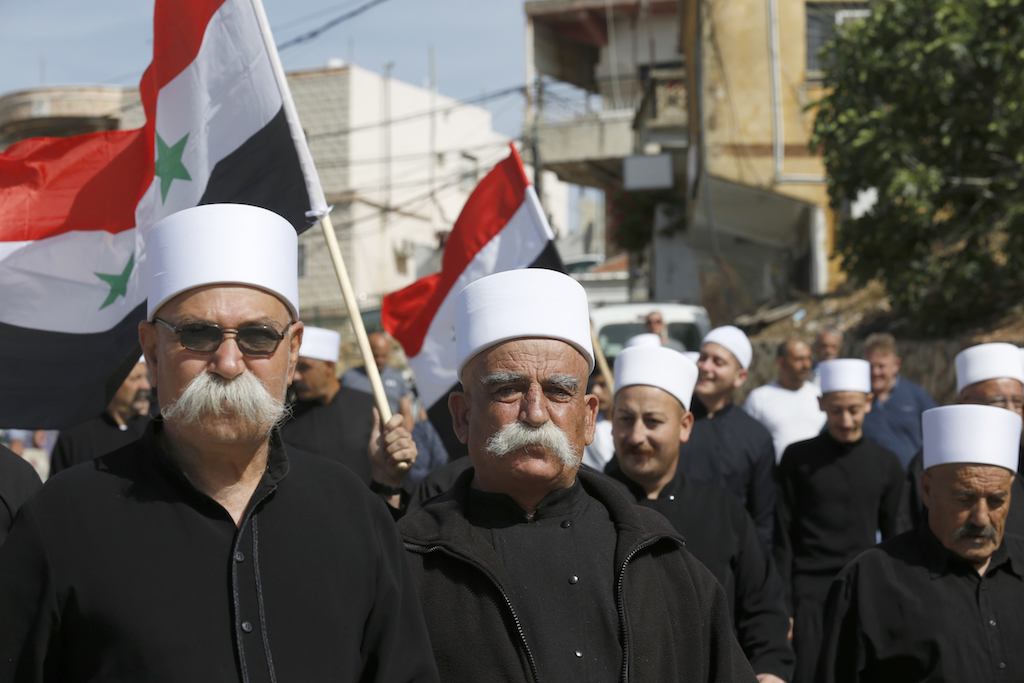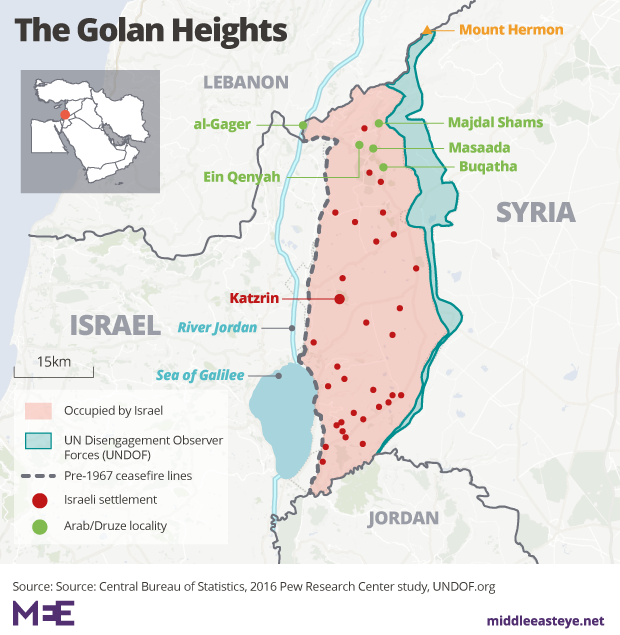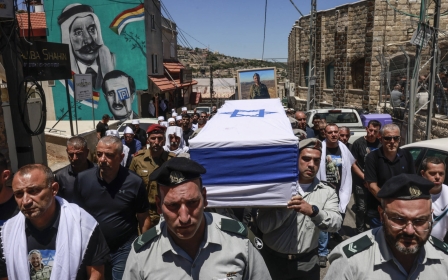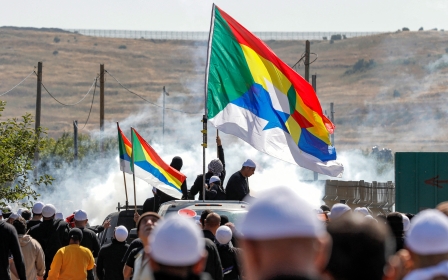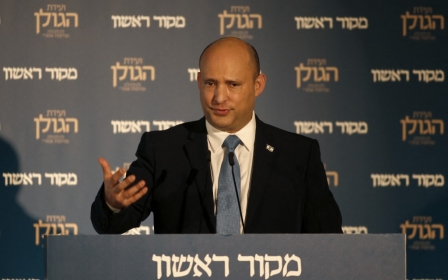Golan Heights: Why the Israeli-occupied Syrian territory matters

The Golan Heights has officially been recognised as part of Syria since the country won independence in 1944.
Despite numerous wars, claims and counter-claims, the international community continues to regard the scenic, resource-rich region as part of Syria.
Israel, which has occupied the territory since 1967, maintains that it has sovereignty over the Golan Heights.
In 2019, the United States under Donald Trump decided to officially recognise the Golan as Israeli - a move that President Joe Biden has not reversed.
On Saturday, an apparent rocket strike hit a football pitch in Majdal Shams, the largest town in the Golan, killing 12 children.
New MEE newsletter: Jerusalem Dispatch
Sign up to get the latest insights and analysis on Israel-Palestine, alongside Turkey Unpacked and other MEE newsletters
Those children were members of the Syrian Druze community that make up the majority of the Golan's population.
Washington, some news outlets and Israeli officials incorrectly said the strike happened in "northern Israel", highlighting the uncertain status of the region and its inhabitants.
The deaths have also sparked renewed threats by the Israeli government against Lebanon, with Israel blaming Hezbollah for the attack, allegations the Lebanese movement denies. None of the children killed were Israeli citizens.
What is the status of the Golan Heights?
The Golan Heights is a strategic plateau straddling Israel and Syria and overlooking southern Lebanon. It was captured by Israel during the Middle East war of 1967 and subsequently annexed in a move never recognised by the international community.
The occupied portion of Golan refers to the western two-thirds of the geological Golan Heights, as well as the Israeli-occupied part of Mount Hermon.
The Golan is recognised as part of Syria by the United Nations. UN Resolution 242 calls for Israel to withdraw from Golan and other territories it occupied in 1967, including the Gaza Strip, the West Bank and East Jerusalem.
However, Israel has repeatedly refused to do so, and in 1981 declared the territory formally annexed to Israel.
Since 1974, the UN Disengagement Observer Force (Undof) has monitored the ceasefire between Syria and Israel, and patrolled the demarcation line between Syrian and Israeli-controlled areas of the Golan.
Following the establishment of a ceasefire in 1967, Israel began the construction of settlements in the Golan and moved Jewish settlers there, in contravention of international law.
In the late 2000s, secret talks began between Syria and Israel, and reportedly included the possibility that the territory would return to Damascus in exchange for a peace deal.
However, negotiations collapsed when Israel launched a war on Gaza in 2009.
In March 2019, then US president Donald Trump signed an executive order recognising Israel's sovereignty over the Golan Heights, a move that experts at the time denounced as a violation of international law, which prohibits states from acquiring land by force.
Despite criticism at the time, after ousting Trump in the 2020 US election, the Biden administration has not reversed the decision and has referred to the territory as "northern Israel" rather than Syria or occupied territory.
Who lives in the Golan Heights?
The 1967 war forced hundreds of thousands of Syrians to flee the Golan into other parts of Syria. The population of the region is now a mix of Syrian Arabs and Jewish Israeli settlers.
Since the Syrian civil war erupted in 2011, Syrians in the Golan taking Israeli citizenship have become more common, though the vast majority reject it.
The Druze community consists of around 23,000 people in the Golan Heights, and lives alongside around 25,000 Israeli Jewish settlers who live in settlements that are illegal under international law.
A monotheistic sect spread mainly around the Levant, the Druze faith is believed to be an offshoot of Ismaili Shia Islam that developed in the 11th century, though the community is highly secretive about its beliefs.
Some modern Druze identify as Muslim, though it is thought the faith has been influenced by other religions and philosophies that have been prevalent in the eastern Mediterranean for centuries, including Gnosticism and Neo-Platonism.
Druze people have often faced persecution and do not allow conversion in or out of the faith, leaving the community insular and tightly knit.
Druze citizens of Israel, unlike other Arab citizens, are required to serve in the Israeli army and have been seen as more integrated into Israeli society compared to Muslim and Christian Palestinian citizens of the country.
Druze in the occupied Golan Heights, by contrast, mostly do not have Israeli citizenship and have maintained their Syrian identity and citizenship. Non-citizen Druze are regarded as having "permanent residency" status by the Israeli government, but cannot participate in elections or travel on an Israeli passport.
Since the war on Gaza began in October there has been sporadic fighting between Israel and Lebanon's Hezbollah movement, which has seen hundreds killed in Lebanon and dozens in Israel.
The Golan Heights has not been able to avoid the bloodshed. Even before Wednesday's incident, rockets from armed groups attacking Israel have killed several people in the territory
Why is the Golan so important?
The Golan is thought to provide around one-third of Israel's fresh water supply. Water from the Golan travels to the Sea of Galilee and the Jordan River.
Compared to other regions occupied by Israel that may have primarily strategic or cultural significance, the conflict over the Golan is heavily driven by resources.
As Israel's only land border with Syria, the territory is also strategically important.
The Golan has occasionally been struck by missiles and other forms of fire from Syria in recent years, with Israel retaliating against Syrian and Iranian targets.
Israel has claimed the continued threat from Iran, Syria and their Lebanese ally Hezbollah has meant maintaining control of the Golan is vital for security.
The landscape is still littered with debris from the 1973 Middle East war, alongside military bases and outposts established in the intervening decades.
Earlier this month, Hezbollah launched an attack on a mountaintop base on Mount Hermon, during which the group targeted intelligence systems, "destroying them and starting a major fire".
With tensions continuing to mount between Israel and Lebanon, the Golan Heights is likely to maintain its central role in the region's security.
Middle East Eye delivers independent and unrivalled coverage and analysis of the Middle East, North Africa and beyond. To learn more about republishing this content and the associated fees, please fill out this form. More about MEE can be found here.



